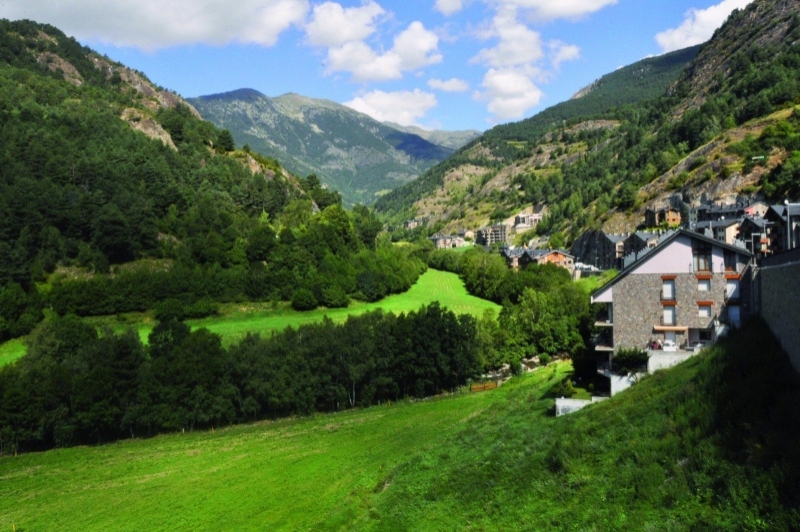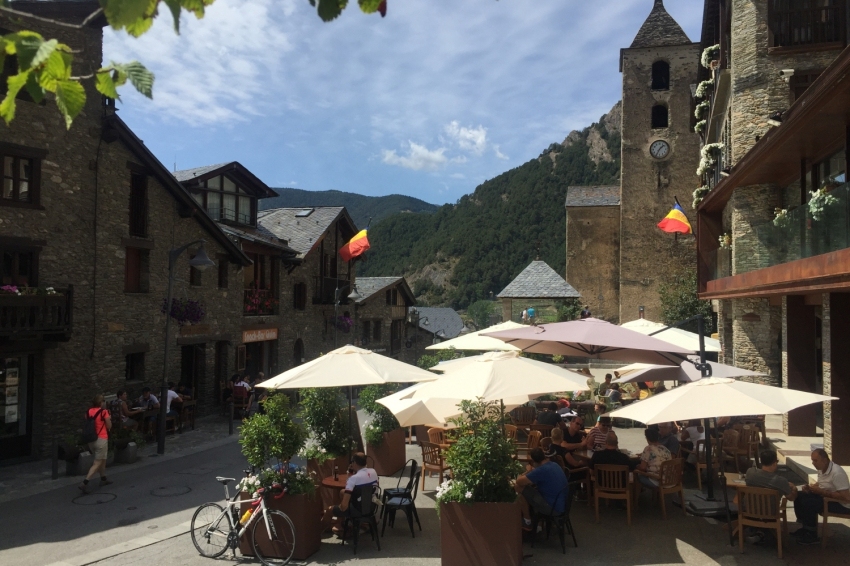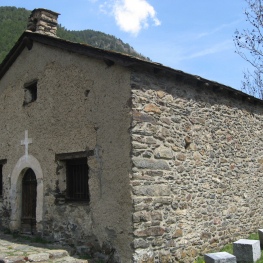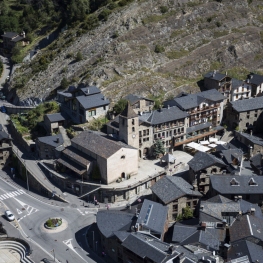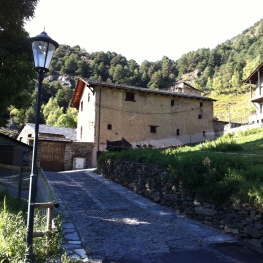Parròquia d'Ordino
The town of Ordino is located in the extreme northwest of the Principality of Andorra, at an altitude of 1,298 meters and only 9 kilometers from the capital, Andorra la Vella.
Ordino, is the third, according to the protocol order of the seven parishes of Andorra. With 90 km² it is the largest after Canillo. The parish includes the Valira de Ordino or Valira del Norte pond, to the northwest of the Principality. It limits with the Country of Foix, Canillo and La Massana.
Historically Ordino had been noted for its forges, especially the Forge of Serrat and the Forge of Areny. The closure of the forges at the end of the 19th century and emigration led to a sharp decline in the number of inhabitants. In the seventies, coinciding with the expansion of tourism and the consequent construction of new homes, urbanizations have appeared and there has been a notable recovery of the population.
In addition to being the historical industrial center, Ordino is considered the cultural center of Andorra. The Manual Digest (1748) was written here, called the "Andorran Bible", which deals with Andorran history, government and uses and customs. The author was Antoni Fiter i Rossell from Ordinense.
The parish church of Sant Corneli i Sant Cebrià, mentioned in the year 839, with two Romanesque images of the Virgin from the 12th and 13th centuries, and the Romanesque church of Sant Martí de la Cortinada, with wall paintings from the 12th century, stand out. Also the Fiter-Riba ancestral homes, where the original of the Manual Digest is kept, and Areny-Plandolit, the family that owns the Farga del Areny, acquired in 1972 by the General Council and converted into an ethnological museum, with an archive and a library with more than 5,000 volumes.
In Ordino are the Postal Museum of Andorra and the Miniature Museum.
The parish of Ordino has numerous works of contemporary art spread throughout its territory.
In front of the main entrance of the National Auditorium is the sculpture "Homage to Andorra" by Toshimitsu Imaï.
In the Iron Route itinerary, we can enjoy "En casa de tierra y del fugo" by Alberto Carneiro, "The Jordino family" by Rachid Khimoune, "Endless" by Mark Brusse, "Great iron car and pic2 by Jordi Casamajor, "The Walking Mole Iron Man" by Guy de Rougemont and "Earth, Iron, Water and Fire" by Satoru Satu.
Next to the botanical garden of the Vall de Sorteny Natural Park, you can see the Estripagecs sculpture, a sculptural ensemble made up of five large totem poles and created by the Andorran artist Pere Moles.
In Arcalis, we find the work "Arcalís 91" by Mauro Staccioli.
Within popular folklore, the Last Bear of Ordino is represented, a popular farce of theater and dance around the hunt for a bear. In the performance, a variety of characters from Andorran rural life make an appearance and the hunting of the animal is presented as a pretext to stage the brawls in which they find themselves immersed. This is an ancestral festival in the Andorran valleys that was gradually lost throughout the 20th century and has only been recovered in Encamp (1950s) and Ordino (1985). These two bear festivals are included in the General Inventory of the Cultural Heritage of the Government of Andorra as intangible assets, and their inclusion in UNESCO's intangible cultural heritage of humanity is also being processed.
In this parish you can enjoy adventure sports at all times of the year, from via ferrata to canyoning or zip-line launching. In addition, in these lands there are natural jewels of great beauty and heritage, such as the Sorteny Valley Natural Park and the famous Tristaina lakes. In winter, you can practice snow sports at the Ordino Arcalís ski resort, opened in 1983, located in the Forat d'Arcalís coma, at an altitude of 1,940 m to 2,625 m.
Source: visitordino.com

Nearby routes
See all routes »- Route through the Pico del Estanyó… (a 4.9 km)
- Iron Route in Andorra (a 4.9 km)
- Route of the Tamarros in Andorra (a 4.9 km)

